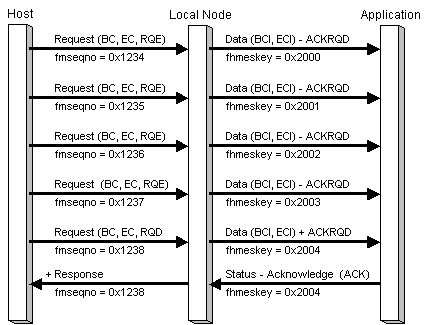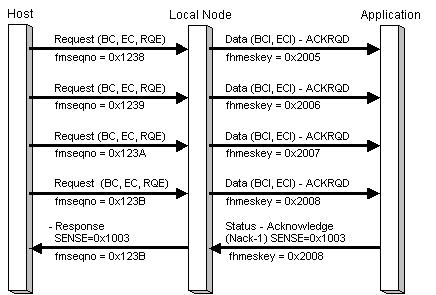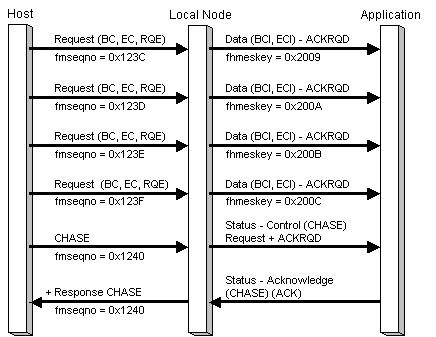
The local node sends chains of data from the host to the application with their ACKRQD field set as follows:
If the corresponding SNA request was received specifying definite response, and the BIND parameters specify that the primary uses definite or definite/exception chain response mode.
If the corresponding SNA request was received specifying exception response, and the BIND parameters specify that the primary uses exception or definite/exception chain response mode.
If the corresponding SNA request was received specifying no response, and the BIND parameters specify that the primary uses no-response chain response mode.
In case 1, the application should always send an acknowledgment as follows:
In case 2, the application should only send an acknowledgment in the following cases:
In case 3, the application should not send acknowledgments; however, the sending of a Status-Acknowledge(Ack) or Status-Acknowledge(Nack-1) by the application has no effect—it is discarded.
Whenever an application sends a Status-Acknowledge(Ack) or Status-Acknowledge(Nack-1) to a received Data message, it implicitly confirms receipt of this and all previously-received Data messages.
In case 2, the host can issue a CHASE request; the local node sends a Status-Control(CHASE) Request with ACKRQD set to the application. When the application is in a position to confirm receipt of all outstanding data, it should issue a Status-Control(CHASE) Acknowledge message, which the local node converts into a positive response to CHASE for the host.
In cases 1 and 2, if the local node detects an error in a received request, it converts the request into a special Data message, which it passes to the application. Regardless of the chain response mode specified for the secondary in the BIND parameters, this Data message has the following characteristics:
This mechanism allows:
The following three figures illustrate the outbound data confirmation and rejection protocols between the local node and the application and how those protocols relate to the underlying SNA protocols.
In the first illustration, the host sends a definite response chain to get the application to confirm receipt of the RQD request and all previously sent RQE chains.

In the following illustration, a Status-Acknowledge(Nack-1) from the application rejects the last chain and confirms receipt of all previously sent data chains.

In the following illustration, the host sends a CHASE request to get the application to confirm receipt of the CHASE and all previously sent chains.
